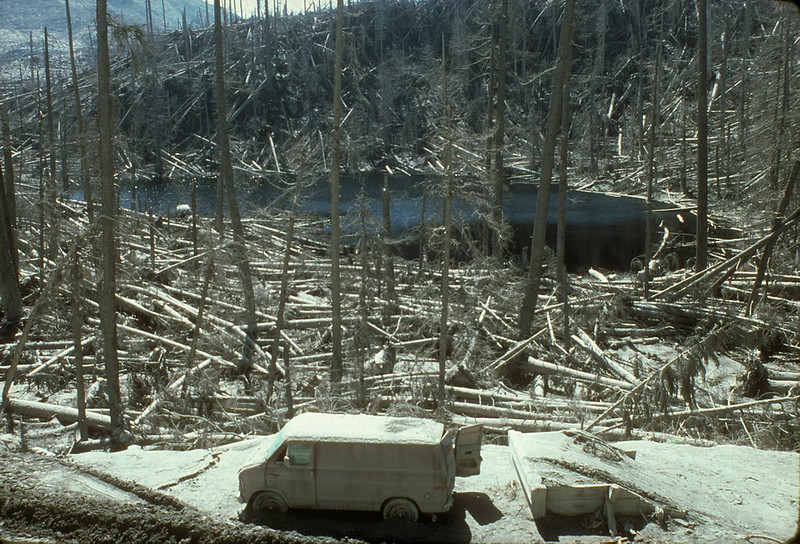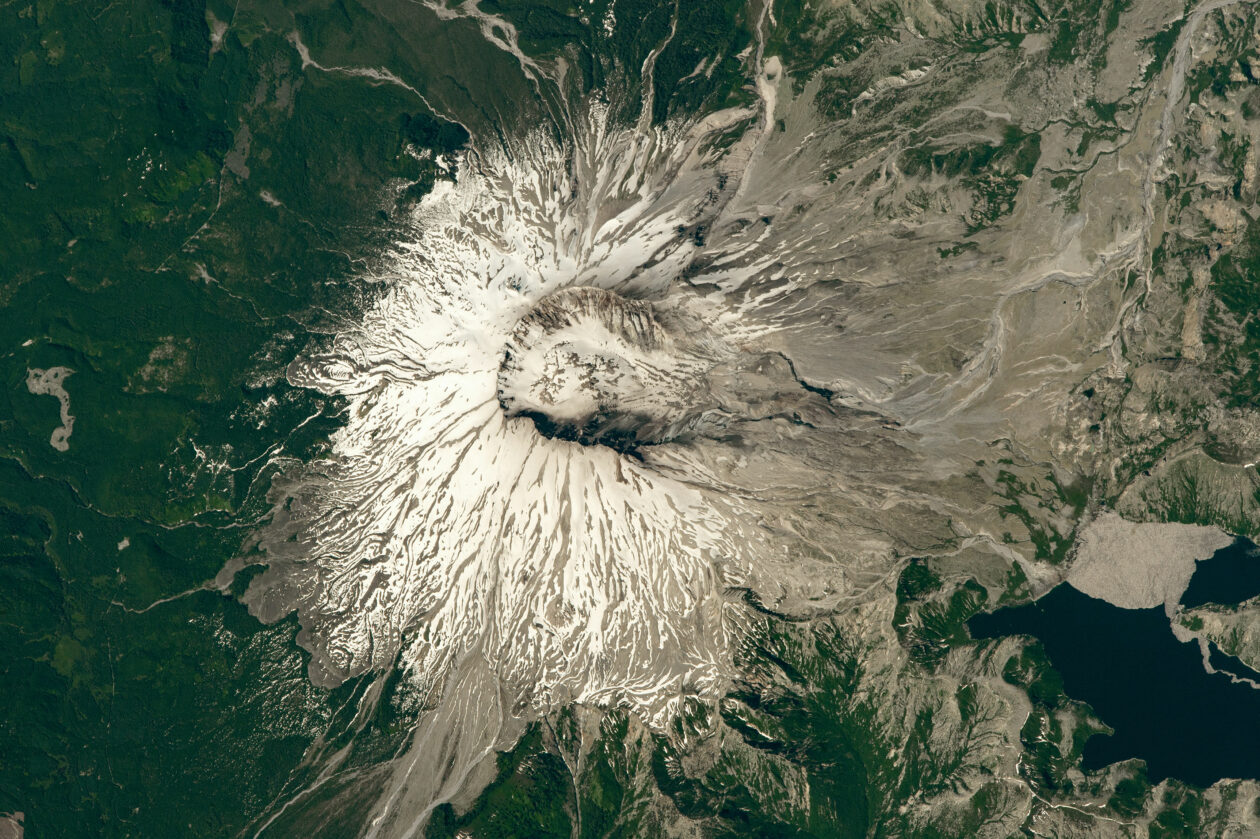
Seismologist Steve Malone feels a magnitude-5.1 rumble of deja vu whenever he hears the latest developments in the debate over reopening businesses amid the coronavirus outbreak.
It reminds Malone of the debate that raged in the days before Mount St. Helens blew its top on May 18, 1980, devastating more than 150 square miles of forest land around the volcano in southwestern Washington state, spewing ash all the way to Idaho, causing more than $1 billion in damage and killing 57 people.
In the weeks before the blast, some wondered whether the threat was overblown.
“Back then, it was essentially an unfolding local disaster,” said Malone, who was the principal scientist responsible for monitoring Mount St. Helens at the time and is now a professor emeritus at the University of Washington. “We didn’t know what the result was going to be, but there was an evolving situation that spring that we didn’t understand very well.”
He recalled the discussions over what to do. “There were all sorts of pressures on the civil authorities to not close up areas to the public, to let people go about their daily lives in the same way,” Malone said.
Finally, two weeks before the big eruption, Washington’s governor signed an emergency order to close off a “red zone” around the mountain. Forty years later, Gov. Jay Inslee is facing a similar balancing act over what to shut down due to the risk of COVID-19 infection, and what to open up.
“It’s a very, very different scale, but with enough similarities that you’re thinking, ‘Whoa, here we go again,'” Malone told me.
Coronavirus has put a crimp in Monday’s observances of the eruption’s 40th anniversary: The main highway to the Mount St. Helens National Volcanic Monument is closed due to the outbreak, as are the visitor centers.
The Mount St. Helens Institute, a nonprofit organization that uses the eruption as a teachable moment, is adjusting to the restrictions on gatherings by planning an “Eruptiversary” livestream featuring Bill Nye the Science Guy at 6 p.m. PT today.
Malone and his colleagues at the Pacific Northwest Seismic Network will celebrate the date on Monday with a series of YouTube presentations starting at 6:30 p.m., followed by a live Facebook Q&A at 8 p.m.
“It’s really pretty comprehensive,” Malone said.
Forty years ago, May 18 was a date that would live in tragedy — but for Malone, it also marked the beginning of modern volcanology. “We were right at the dawn of computer recording and analyzing seismic data,” he said. “We were essentially using the old, analog paper film recorders, and we had just started our first computer system operating.”
Before the rumbling started in the spring of 1980, there were only three seismographs monitoring Cascade volcanoes north of the California state line — on Mount St. Helens, Mount Rainier and Mount Baker. Malone and his team scrambled to install more seismographs on St. Helens, and had 10 in place when it blew up.
Malone said his worst-case scenario envisioned a slip failure on St. Helens’ slope that might push debris to Spirit Lake, a tourist destination situated a few miles from the summit. He thought the blast cloud might extend as far as six miles or so.
“What happened was much larger than that worst-case scenario, maybe three times as big,” Malone said. “That was way out on the tail of the probability curve — so far, I don’t think that size of an event was even mentioned.”
Most of Spirit Lake was temporarily displaced by the avalanche of mud and debris rolling from the blast zone. The owner of the lake’s lodge, a colorful curmudgeon named Harry R. Truman, was lost in the tumult.

Over the decades, Spirit Lake returned to its natural state — without the lodge, of course. Greenery eventually reappeared amid the blown-down trees, and so did the elk that made their home in St. Helens’ environs. So many elk returned, in fact, that the herd had to be thinned a few years ago.
Mount St. Helens went through another eruptive episode in the 2004-2008 time frame, but the mountain has been relatively quiet since then. Today, the region is peppered with seismometers and GPS receivers that can monitor movements to within a fraction of an inch. A gas chemistry sensor sniffs the emissions that emanate from Mount St. Helens’ dome.
“Our instruments are much, much better than they were 40 years ago,” Malone said.
The monitoring network tracks St. Helens’ background seismicity, as well as an occasional uptick of activity that occurs about four or five miles beneath the surface.
“We think that represents a replenishment of the magma,” Malone said.
“In the next years to maybe decades, St. Helens will probably erupt again, and maybe the lava dome will again blow,” he said. “Maybe there’ll be explosive components to it. How big? You don’t know, necessarily. But with increased monitoring, and the capabilities that the USGS Volcano Hazards people have, we’ll probably do a better job of anticipating some of the details of what is possible. Each time, you get a little better at this.”
Although Mount St. Helens might be the most likely volcano to erupt again, Mount Rainier is the most dangerous volcano.
“That’s because even a small eruption on Mount Rainier could have really devastating effects,” Malone said. “It’s a really big hill with lots of ice and snow on it. An eruption that causes melting glaciers would generate lahars, mudflows, and because a lot of people live in the valleys that lead away from Mount Rainier … there’s a lot of hazard in those cases.”
Like volcanic eruptions, pandemics are low-probability, high-impact events that require lots of contingency planning. So I asked Malone if he had any words of wisdom for such cases.
“You have to react as best you can with the knowledge you have,” he said. “There’s lots of uncertainty, and of course, the emergency response people hate uncertainty. They want to hear ‘yes, no, we do this or we do that,’ and when you say, ‘Well, we don’t know enough to be able to say,’ you can’t close down an area 20%, like a weather forecast. You make some decisions based on what you think is coming. But there are all sorts of other things besides what the scientists say that one has to keep in mind.”
I pressed him a bit more: Any advice relating to the pandemic?
“Mostly I would say I’m sure glad I’m not in the position of needing to do that,” he replied. “My hat’s off to the politicians and the public health people who really have to make those decisions. It’s way above my pay grade.”
- Before the 1980 eruption, Mount St. Helens ranked as one of the most picturesque mountains in the Cascade range. (U.S. Forest Service Photo)
- Harry R. Truman, owner and caretaker of Mount St. Helens Lodge at Spirit Lake, refused to leave his home despite evacuation orders, becoming a folk hero in the process. (U.S. Forest Service Photo)
- The ash cloud from the May 18 eruption rose tens of thousands of feet into the air, and traces of the ash were detected as far away as Oklahoma. (USGS Photo / Austin Post)
- The ash cloud looms above a parked Ford Pinto and dirt bike. (Photo by Dick Lasher)
- An ash-covered van sits amid the debris from the eruption. (U.S. Forest Service Photo)
- A 1982 photo shows ash and steam issuing from Mount St. Helens’ caldera, with a reconstituted Spirit Lake reflecting the scene. (U.S. Forest Service Photo)
- This view of Mount St. Helens and its surroundings was captured by an astronaut aboard the International Space Station in 2017. (NASA Photo)
- Mount St. Helen rises above the fog lying in the Toutle River valley on March 21, 2020. (GeekWire Photo / Kevin Lisota)
GeekWire’s Alan Boyle was an assistant city editor at The Spokesman-Review in Spokane, Wash., when Mount St. Helens erupted in 1980. Check out his reminiscence of the event, “The Day the Earth Turned Gray,” archived at NBCNews.com and the Internet Archive.











